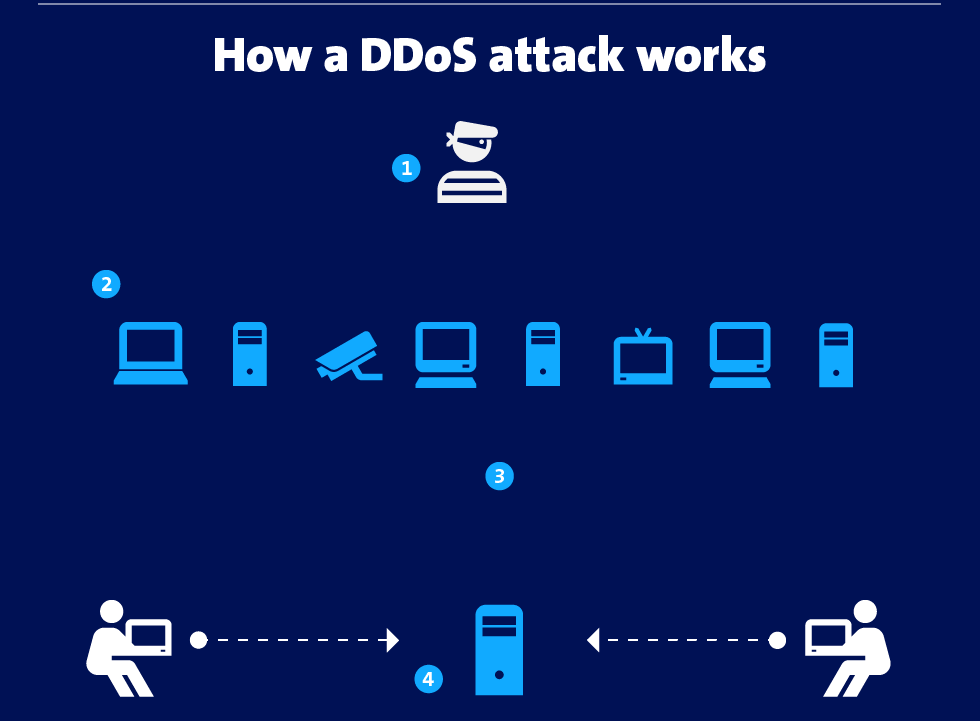Regrettably, Denial of Service (DoS) and Distributed Denial of Service (DDoS) attacks are common all over the Internet. Even with how common they are, most people don’t know what actually constitutes a DDoS attack. That said, what is a DDoS, or Distributed Denial of Service attack, how does it work, and how does it affect the intended target and its users?
Keep reading and we’ll explain!
What Is A DDoS Attack?
What Is A Denial Of Service?
Denial of Service is a very specific issue. To explain it simply, a website experiences DoS issues when it is no longer able to service its regular users. Most of the time, these issues happen without malicious intent. For example, a large website links to a small website, which isn’t built for the same level of traffic (the Reddit effect). The small site can’t handle the influx of traffic and therefore becomes unresponsive.
Due to this, by adding the word “attack”, a Denial of Service Attack indicates malicious intent. The attacker is making a conscious effort using a DoS to create issues. The methods of doing this can vary greatly and a “DoS attack” is only referring to the expected result of the attack, not the way it is being executed. By consuming the server’s resources, it can cause the server to become unavailable to its regular users, and in extreme cases, even crashing the server and taking it down entirely.
Struggling with downtime issues? Zalvis is the hosting solution designed with reliability and security in mind! ✔️ Check out our web hosting plans!
What Is A Distributed Denial Of Service Attack?

The difference between Distributed Denial of Service attacks and regular Denial of Service attacks is the keyword, “Distributed”. A DoS attack is carried out by a single attacker using a single system, whereas a Distributed attack is carried out across multiple systems that are executing the attack.
A Distributed Denial of Service attack requires multiple systems to carry out the attack, not multiple attackers. Commonly, large DDoS attacks are not executed through the attacker’s own computer, but through a number of infected systems. Attackers can abuse a number of vulnerabilities to gain control over a large number of systems. The attacker then uses these compromised computers/servers to mount an attack against its target.
The website targeted by the DDoS attack is usually the only victim. But this isn’t entirely accurate. Users with infected systems that are part of the attacking systems are similarly affected. Not only are their computers being used in illicit attacks, but their computer’s and Internet connection’s resources are also consumed by the attack that is being launched.
There are a wide variety of methods that can be used to execute these attacks but, in the end, DDoS attacks have a singular purpose, keeping authentic users from using the target system.
Does Zalvis Offer DDOS Protection?
Yes, absolutely!
Our network automatically detects and mitigates distributed denial-of-service attacks from large-volume intended to make your websites unavailable to legitimate users.
We utilize real-time network protection, which detects, analyzes, and blocks attacks in real time. Attackers are blocked inline, then redistributed across the backbone of our network.
Rules are automatically created using machine learning from traffic across our global network to intelligently reroute malicious traffic during this event.
Our DDoS protection doesn’t impact the latency of your site, it’s happening inline, we’re not routing your traffic to a third-party for protection.
Additionally, we can protect your site from a range of DDoS attack methodologies including, UDP, SYN, HTTP floods, and more.
This feature is always on, always running in the background to protect our customers.